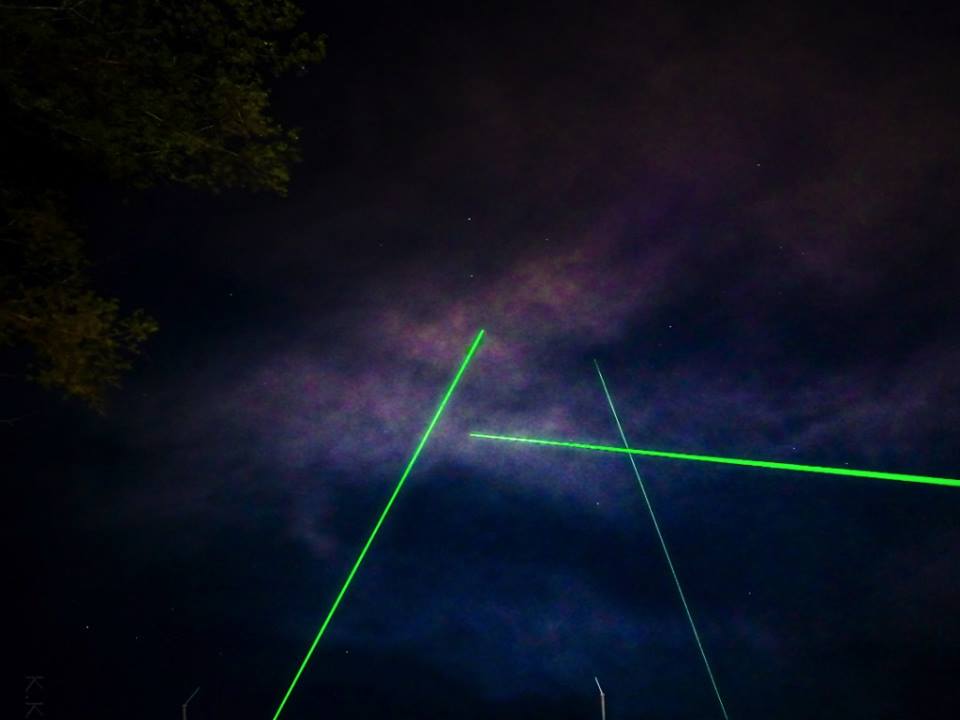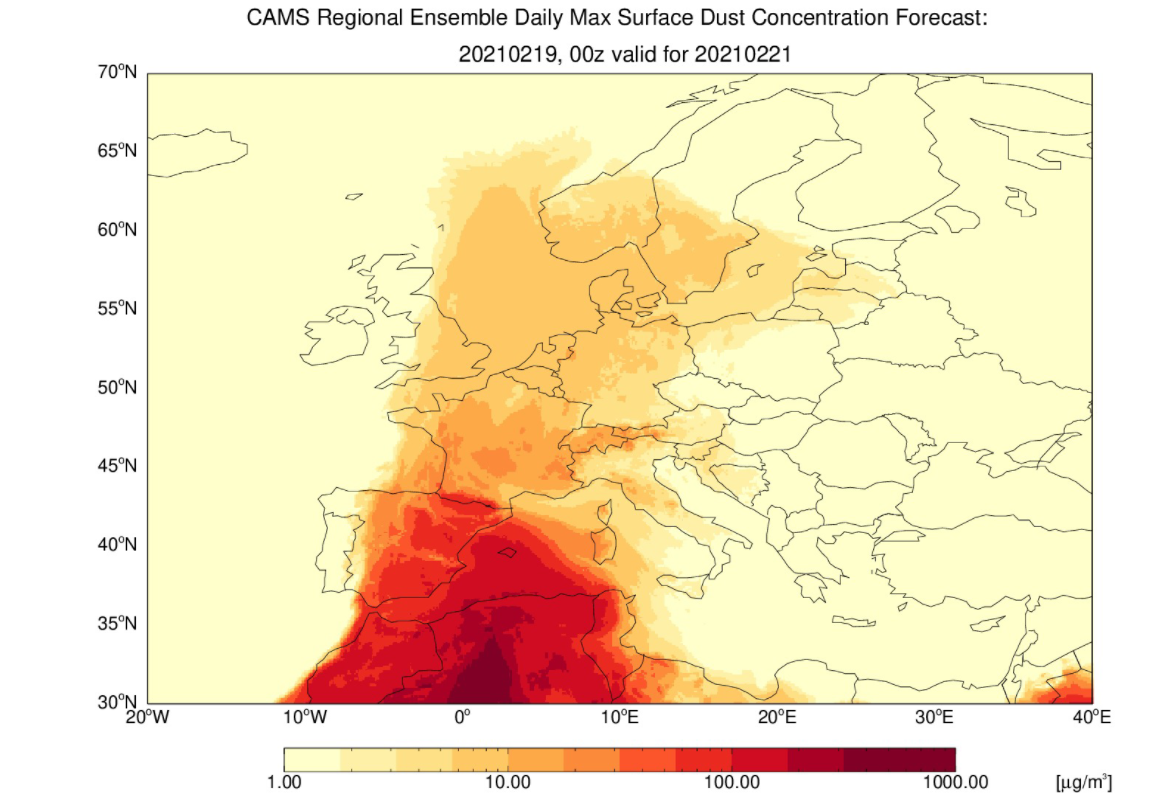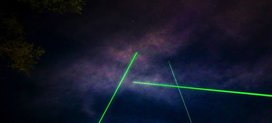
Urban aerosols - Remote Sensing Laboratory (RS-Lab) research projects
The Remote Sensing Laboratory (RS-Lab) of the Institute of Geophysics, Faculty of Physics, University of Warsaw, was established on the initiative of dr hab. Iwona Stachlewska, prof. ucz. who joined the team of scientists from the Atmospheric Physics Department in 2008. RS-Lab provides information on the distribution and properties of aerosols in the atmosphere to the European Research Infrastructure for Aerosols, Clouds and Trace Gases (ACTRIS), NASA Robotic Aerosol Network (AERONET), EARLINET and PollyNET lidar networks and the PolandAOD national network. The measurements are carried out using one of the most modern lidar equipment in the world, built-in cooperation between the University of Warsaw and the German Institute for Tropospheric Research (TROPOS). Lidar measurements are remote measurements, providing information e.g. on optical properties of aerosol, size and shape of particles, their height and thickness of formed layers.
More and more scientists from Poland and abroad are showing interest in urban aerosol research. Professor Stachlewska's team studies polluted air in agglomerations, full of various types of atmospheric aerosols. They may be of both natural origin, i.e. inflowing mineral dust, particles originating from biomass fires, plant pollens or fungal spores, as well as of anthropogenic origin, e.g. pollutants from exhaust emissions or soot. Aerosols are the main cause of allergies and respiratory diseases. The results of the research can be used, for example, in the modelling of predicted pollen concentrations and air quality, and in the planning of green areas, which should contribute to an overall improvement in air quality and life in cities.
RS-Lab, lidar survey campaign

Mineral dust, from agricultural fields, is an important component of atmospheric aerosol. It can appear both near the ground surface, forming blizzard sand, and at higher altitudes, promoting cloud formation. Inflows of desert dust from the Sahara desert are increasingly observed in the higher layers of the atmosphere. PhD student Dominika Szczepanik is investigating, among other things, whether the presence of such dust can affect the quality of life and human health. Does mineral dust affect the climate and its changes, contributing to more dynamic weather phenomena? Which type of dust, local or desert, is more significant? Her teammate, PhD student Fátima Francisca Mirza Montoro, now residing at the University of Granada, is analysing the physicochemical composition and transmission of Saharan dust, coming from Africa via Gibraltar into Spain, and further north and north-east, reaching areas of the Baltic Sea.
Airborne smoke from biomass burning also comes from a variety of sources, ranging from local fires - forest, grassland or agricultural fires - to large fires in the large forest or grassland communities. In the case of the latter, the enormous amount of heat generated during the fire causes aerosols to rise into the upper troposphere, where they are transported even intercontinental! The analysis of the inflow of these aerosols over Warsaw is conducted in RS-Lab by PhD student Łucja Janicka. Together with Dr Olga Zawadzka-Mańko and Dr Pablo Ortiz Amezcua, they study the importance of long-range transport of biomass burning emissions for local smog in urban environments. In a Polish-Lithuanian project bringing together remote sensing experts from the University of Warsaw (UW) and the State Research Institute Physical Science and Technology Centre (FTMC), Dr Amezcua and mgr Janicka analyses aerosol inflows from biomass burning over Warsaw and Vilnius, recorded using the same set of instruments.

The research analyses are based on a variety of measurement data. They come, among others, from the national air quality monitoring network of the Chief Inspectorate for Environmental Protection (GIOŚ - ground-based measurements), European Space Agency (ESA - satellite measurements), AErosol RObotic NETwork (AERONET - providing optical properties of aerosols in the vertical column of the atmosphere), Andalusian Institute for Earth System Research (IISTA-CEAMA, ACTRIS-UGR), and the RS-Lab, measuring aerosol optical properties in 12 channels in the altitude range from 100 m to 25 km. The RS-Lab lidar belongs to the international measurement network European Aerosol Research Lidar Network (EARLINET), operating within the Aerosol, Clouds and Trace Gases Research Infrastructure (ACTRIS).
Within the latest PRELUDIUM BIS 2 project, the research infrastructure of RS-Lab will be enhanced with automated in-situ measurements of pollen and fungal spores, performed with the optical Pollen Monitor of the Institute for Research and Development of Optoelectronics (INOE) in Romania. The Pollen Monitor and Lidar will simultaneously perform continuous measurements for 8 months during the growing season of most plants in Warsaw. Based on the acquired data, it will be possible to fully describe the physical and optical properties of aerosol associated with pollen in the city. The work will be carried out in close collaboration with scientists from the Technical University of Barcelona (UPC) in Spain and the University of Potsdam (UP). Ongoing RS-Lab projects such as ACTRIS-IMP, POIR, POLIMOS, and MULTIPLY serve to further develop the research infrastructure.
PRELUDIUM BIS 2, Wpływ pyłków alergennych na optyczne i mikrofizyczne właściwości aerozolu miejskiego, dr hab. Iwona Stachlewska, prof. ucz., https://ncn.gov.pl/sites/default/files/listy-rankingowe/2020-09-30apsv2/streszczenia/500186-pl.pdf
RI-URBANS, Research Infrastructures Services Reinforcing Air Quality Monitoring Capacities in European Urban & Industrial AreaS, dr hab. Iwona Stachlewska, prof. ucz., dr Olga Zawadzka-Mańko, https://www.actris.eu/index.php/news-events/news/ri-urbans-project-funded
DAINA-2, BIOSURE - Znaczenie transportu dalekiego zasięgu emisji spalania biomasy dla lokalnego smogu w środowiskach miejskich, dr hab. Iwona Stachlewska, prof. ucz., dr Olga Zawadzka-Mańko, dr Pablo Ortiz Amezcua, mgr Łucja Janicka, https://ncn.gov.pl/sites/default/files/listy-rankingowe/2020-06-15qez4/streszczenia/493506-pl.pdf
PRELUDIUM, Badanie różnic właściwości optycznych i mikrofizycznych lokalnego pyłu rolniczego i pyłu pustynnego transportowanego z dalekich odległości, mgr Dominika Szczepanik, https://projekty.ncn.gov.pl/opisy/486968-pl.pdf
ERASMUS+, Atmospheric observations of aerosols, clouds and reactive trace gases (University of Helsinki), Analysis of a heavy African dust event in South Europe (University of Granada), mgr Fátima Francisca Mirza Montoro
Originally published on - July 8, 2021, 1:22 p.m.
Last update on - July 20, 2021, 8:54 a.m.
Publisher - Sekretariat IGF

